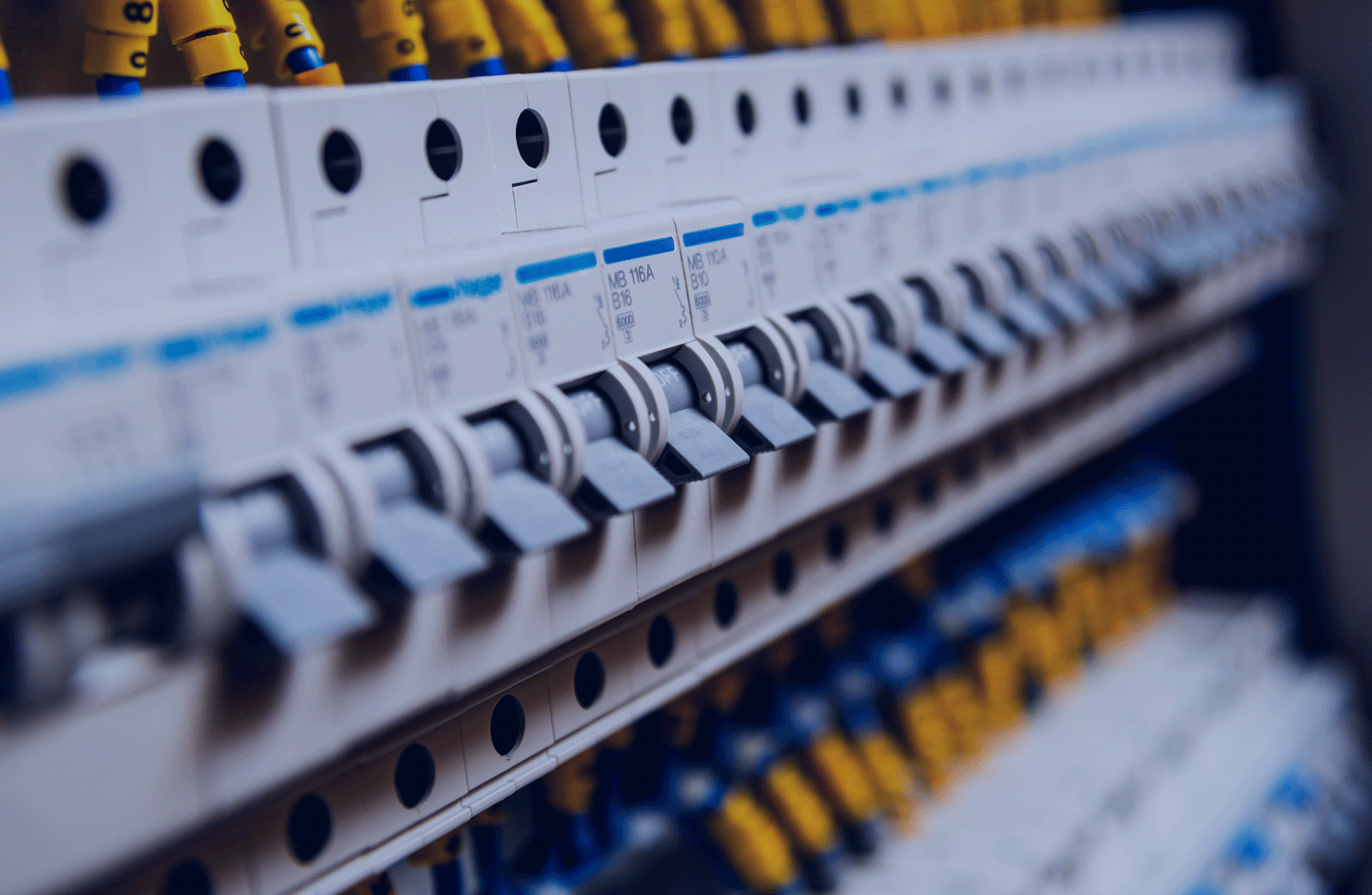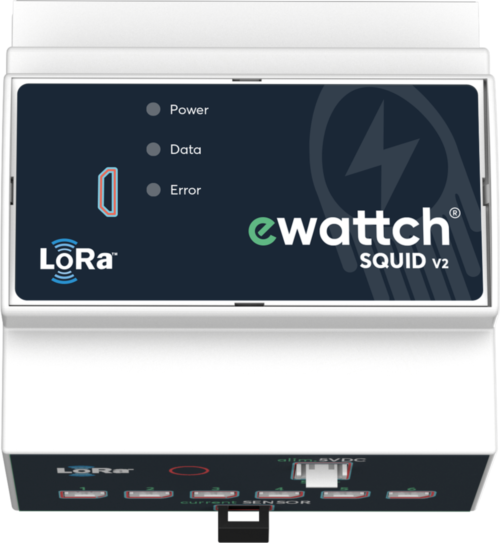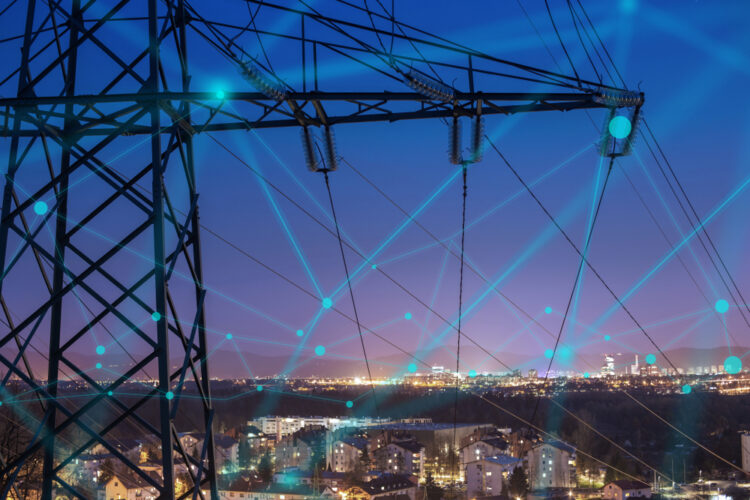Sub-metering has become an essential lever for companies seeking to reduce their energy bills and optimize their performance. At a time when energy prices are soaring and regulations are tightening, companies need to know exactly where each kilowatt consumed is going. Electricity sub-metering is no longer reserved for complex industrial sites. It has become an essential management tool, whether for monitoring a production line, comparing zones within a building, or quantifying the consumption of a single entity in a shared building. In this article, we explain why and how to deploy an efficient metering plan, and above all, how to get the most out of it.
Why install an electricity sub-metering system?
What sub-counting actually does
The installation of this system is a strategic choice, enabling a company to move from an overall view - often too approximate - to a detailed, usable reading of its energy consumption. The addition of sub-meters in a building enables :
- IDENTIFYING CONSUMPTION DRIVES: One of the most immediate benefits of sub-metering is the detection of abnormal consumption. Without detailed data, it's difficult to know whether certain equipment is left running outside business hours: machines left on standby, lighting forgotten, ventilation badly programmed... These invisible drifts can account for a significant proportion of the energy bill. By highlighting them, sub-metering enables you to take swift action, sometimes without even investing, simply by adjusting usage.
- PRIORITIZE ACTIONS TO BE TAKEN: Not all units or zones consume the same amount of energy. Thanks to sub-metering, it is possible to identify the most energy-intensive units or equipment, and focus efforts there first. This granularity of analysis makes it possible to adopt a logic ofcontinuous, step-by-stepimprovement, intervening where the gain is greatest. It is also an invaluable arbitration tool when resources are limited and each action must be justified.
- SUPPORTING INVESTMENT DECISIONS : Replacing a lighting system, overhauling a temperature control system or installing new equipment are often costly decisions. Sub-metering provides a solid, tangible basis for evaluating them in advance, and measuring their effectiveness once implemented. This makes it possible toestablish a reliablereturn on investment (ROI), document the choices made, and reassure internal decision-makers about the relevance of the expenditure incurred.
- COMPLIANCE WITH REGULATORY OBLIGATIONS: The regulatory framework is evolving rapidly. RT 2012 requires consumption to be controlled right from the construction stage. The tertiary sector decree requires a gradual reduction in usage in buildings over 1,000 m². The BACS decree requires the automation of energy management in certain cases. What all these regulations have in common is the need for accurate, continuous and usable data. Sub-metering is the key tool for achieving compliance and documenting the steps taken.
The operational benefits of a well-designed electricity sub-metering system
When correctly dimensioned and structured, an electricity sub-metering system not only produces data, but also becomes a real lever for energy performance, with concrete, rapidly measurable benefits.
Fine-tuned energy management
The precision of sub-metering enables us to go far beyond an overall reading of consumption. By comparing, for example, the electrical usage of offices with that of a production workshop, it becomes possible to detect discrepancies, identify inefficiencies or validate operating hypotheses. This differentiated view facilitates day-to-day management.
Sub-metering is also an evaluation tool. When a new process is implemented or a piece of equipment replaced, it enables the real impact on consumption to be measured. This enables a factual "before/after" analysis, useful both for validating technical choices and for building a results-based improvement strategy.
Cost savings and quick wins
Submetering also helps to optimize the power subscribed to by the electricity supplier. By analyzing consumption peaks, you can smooth out usage, limit power overruns - which are often very costly - andadjust your contract accordingly.
Another immediate effect is the detection of residual consumption, particularly at night or outside activity periods. It's not unusual for equipment to be left on unnecessarily, sometimes without anyone noticing. Cumulative wastage over the year can amount to several thousand euros. If you can see it, you can correct it.
A precise breakdown of consumption
In buildings housing several activities or entities (businesses, services, public utilities, condominiums, etc.), the distribution of energy charges can become a complex, even conflictual, issue. Sub-metering makes it possible to allocate a precise share of consumption to each person, based on objective data.
This system simplifies rebilling, improves transparency, and can even encourage a collective approach to improvement, as each entity can monitor the evolution of its own usage.

How do you effectively implement a sub-metering system?
Step 1: Define a counting plan
The success of a sub-metering project depends largely on the quality of its preparation. Before any installation, it is essential to draw up a rigorous metering plan, adapted to the specific features of the site and the objectives pursued.
Identify critical items and zones
Every building or industrial site has major consumption items, which need to be identified from the outset: heating, ventilation, air conditioning (HVAC), lighting, industrial processes, IT, etc. Targeting these items ensures that the main energy optimization levers are captured. By targeting these items, we ensure that we capture the main levers for energy optimization. This initial analysis also enables us to understand the interactions between different uses and to anticipate potential gains.
Mapping strategic electrical outlets
Once the priority areas have been identified, the corresponding electrical outlets need to be precisely located. This mapping enables us to determine the most relevant measurement points: where a sub-meter can provide usable data without redundancy or gaps. This presupposes a good knowledge of the site'selectrical architecture, and in some cases, a field survey to validate hypotheses.
Prioritize areas to be instrumented according to expected ROI
Not every use justifies the need for a measuring instrument. Theinstallation of sub-meters must meet a specific objective: monitoring drift, control of a costly item, regulatory obligation, etc. It is therefore advisable to prioritize the points to be instrumented according to the expected return on investment. This makes it possible to roll out the system gradually and in a controlled manner, concentrating efforts where they will be most effective.
Ewattch's teams can help companies build this metering plan, drawing on their in-depth knowledge of electrical flows in both industrial and commercial environments. Our expertise in the field enables us to design robust, consistent and scalable metering architectures.
Step 2: Installing sub-meters
Installing an electrical sub-metering system is an accessible operation, provided you master the technical and regulatory rules.
Legally speaking, there's no need to take any administrative steps to add one or more sub-meters to an existing installation. Any homeowner is free to do so, as long as current electrical standards are respected. Please note, however, that under no circumstances can sub-meters be used to resell electricity - this activity is strictly reserved for authorized suppliers and distributors.
Technically speaking, the work is always carried out downstream of the main meter, on the building's internal network. It is therefore the owner's responsibility, and can be carried out by any qualified electrician. Enedis does not intervene in this context, unless the project involves modifying the delivery point (PDL) or the upstream installation.
The choice of equipment depends on the level of precision expected, the number of points to be instrumented and site constraints. In most cases, :
- quick-release clamps for uninterrupted installation,
- multipoint modules, capable of supervising several circuits from a single unit,
- and communicating sensors (e.g. LoRa)to avoid cable runs and facilitate integration into existing environments.
This type of equipment, offered in certain professional solutions such as those developed by Ewattch, minimizes intervention time and has no impact on site operations, even in an industrial context.
In the field, a well-prepared deployment means that a dozen measuring points can be installed in just a few hours. A single gateway is often sufficient to centralize all data, which is then automatically synchronized with the monitoring platform.
Finally, it is advisable to prepare a precise electrical layout, to clearly name each instrumented point, and to check the communication of each sensor as soon as it is installed: these good practices will determine the reliability of future energy analysis.

Technical zoom: the Squid sensor
The Squid is a multi-channel electrical sub-metering sensor designed for detailed monitoring of energy flows. It features 12 measurement channels configurable as single-phase or three-phase, enabling up to 4 three-phase feeders or 12 single-phase circuits to be monitored with a single device.
Communicating wirelessly (LoRa), it integrates easily into existing infrastructure, without complex rewiring or production downtime. Ideal for mapping consumption in an electrical panel, Squid can be used to segment usage by zone, substation or equipment. It is an essential building block for refining a metering plan and controlling energy flows with precision.
Getting the most out of your electricity sub-meters
Once the sub-meters have been installed, the challenge is to transform the raw data into usable information. A well-designed solution doesn't just render consumption curves: it structures the information, analyzes it, makes it understandable and mobilizable. With this in mind, we have developed the EwattchCloud platform, designed to meet the operational needs of both industrial and service companies.
Clear visualization
An efficient platform enables customized dashboards to be set up according to site specifics: by floor, by zone, by use or by type of equipment. This organization facilitates targeted analysis and makes consumption data accessible to the various professions concerned.
Key indicators, such as cost per square meter, the proportion of consumption outside normal working hours, or the evolution of a drift, must be tracked over time. These before-and-after comparisons are essential for assessing the effectiveness of an action or investment.
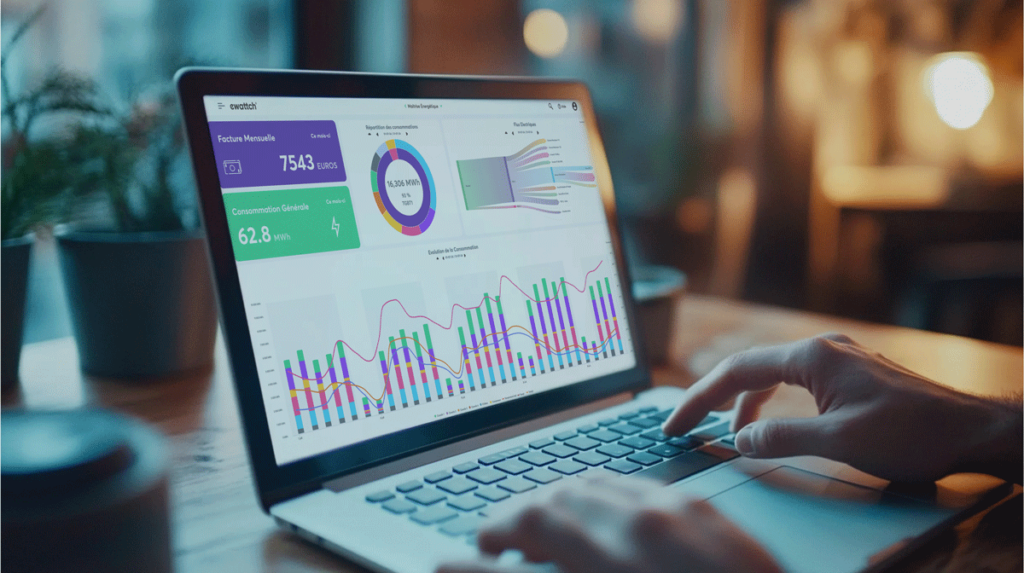
Smart alerts
Early detection of anomalies is another advantage of monitoring tools. A good platform should offer the possibility of setting alerts according to defined thresholds, occupancy schedules or typical consumption profiles. This means, for example, that you can be notified in the event of abnormal night-time consumption or a sudden peak.
More than just a one-off alert, this type of warning can help identify recurring or structural problems, such as equipment left on standby or an oversized system.
Automating these notifications means greater reactivity and continuous vigilance, even without constant supervision.
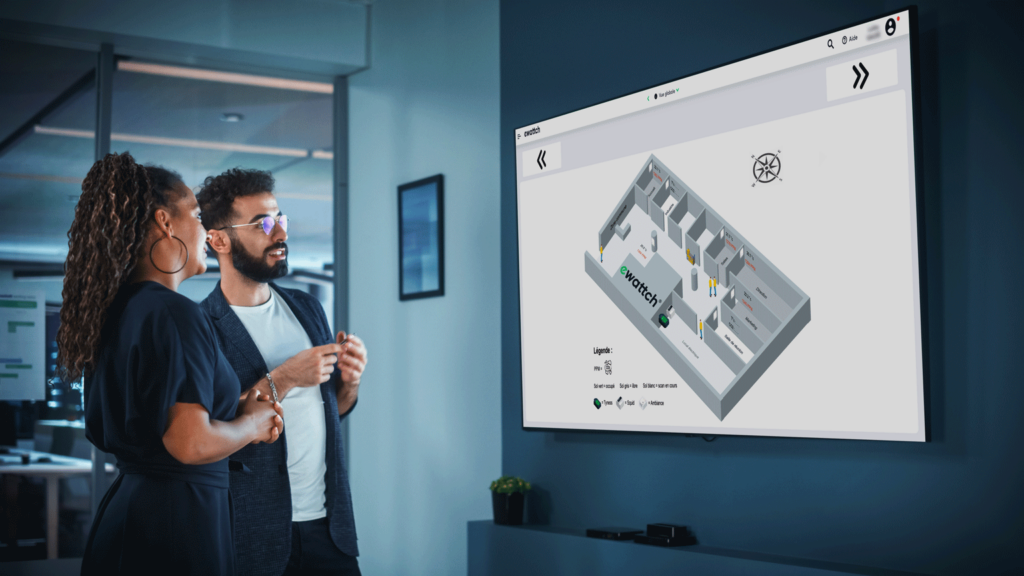
Automated reporting and user engagement
To ensure regular, shared monitoring, the ability to automate the generation and dispatch of reports is an important criterion. These reports, generally in PDF format, can be sent to site managers, technical departments or maintenance teams, at a defined frequency.
In addition, visual management tools displayed in workspaces raise user awareness of energy issues. Some platforms integrate gamification functions, encouraging involvement through comparisons between departments, floors or sites.
Electric submetering in practice
- Feedback from Hôtel Chouchou in Paris



The challenge: optimization without compromise
The Hôtel Chouchou, located in the heart of Paris, stands out for its "French Touch" ambiance and top-of-the-range services. To maintain this high level of quality while keeping costs under control, the hotel was looking to :
- Reduce your energy bills, especially for air conditioning and heating.
- Comply with the BACS decree and health standards on DHW (domestic hot water) temperature.
- Optimize room control according to occupancy and window opening.
- Remote monitoring of critical equipment.
- Strengthen your brand image with innovative, sustainable solutions.
The Ewattch solution: intelligent sensors for optimized management
With the support of our partner GreenKapt, Ewattch has deployed a complete solution combining connected sensors and a cloud platform:
- Squid sensors for electricity sub-metering, guaranteeing precise tracking by zone.
- TyNode sensors in the boiler room for continuous monitoring of DHW temperature.
- Presence, temperature and window sensors in rooms to automatically adjust air conditioning.
- Air conditioner control units, connected to the hotel's PMS planning system.
- EwattchCloud platform, for centralized real-time control with alerts in the event of anomalies.
The results: compliance savings and ROI
The impact was rapid and measurable:
- Reducing the hotel's energy consumption.
- Automated compliance with BACS decree and sanitary standards.
- More reactive maintenance: fewer service interruptions.
- ROI: Concrete results right from the start, thanks to lower energy and maintenance costs.
Sub-metering, a lever for sustainable performance
Electricity sub-metering structures the relationship between companies and their energy consumption, generating tangible benefits on several time scales.
- In the short term, it helps to reduce unnecessary consumption, optimize subscribed power and quickly identify deviations.
- In the medium and long term, it feeds a structured database, essential for guiding investments, measuring the effects of actions undertaken and steering energy performance trajectories.
To achieve these results, implementation must be based on a progressive, methodical approach. With a well-defined metering plan, sub-metering becomes a tool for improving operational efficiency, controlling costs and enhancing environmental performance.
Integrated into a continuous improvement process, it becomes an operational management tool. It makes it possible to track developments, adjust actions over time, and unite teams around shared objectives. In a context of energy transition and pressure on costs, it is a robust, structuring and sustainable lever.

